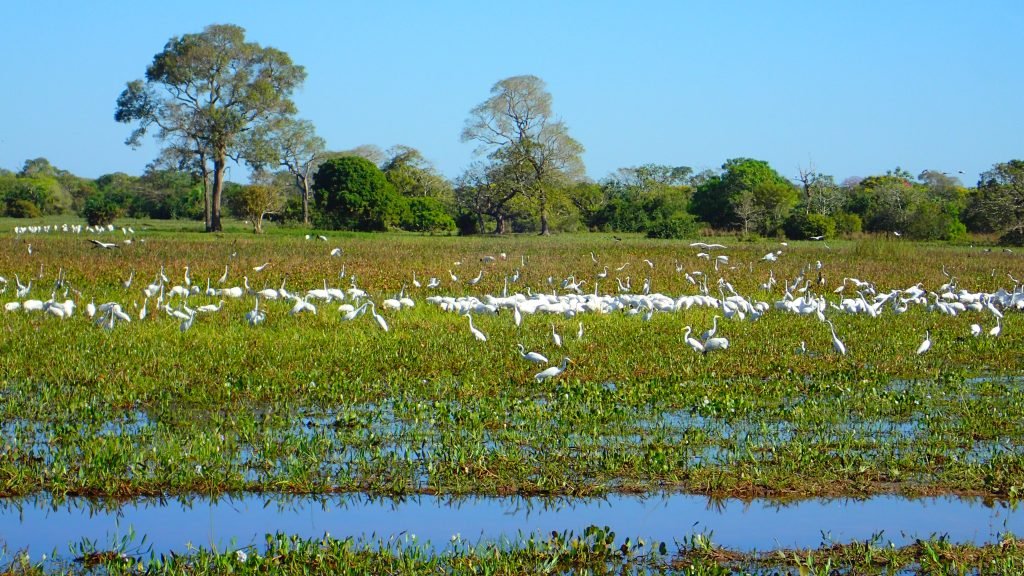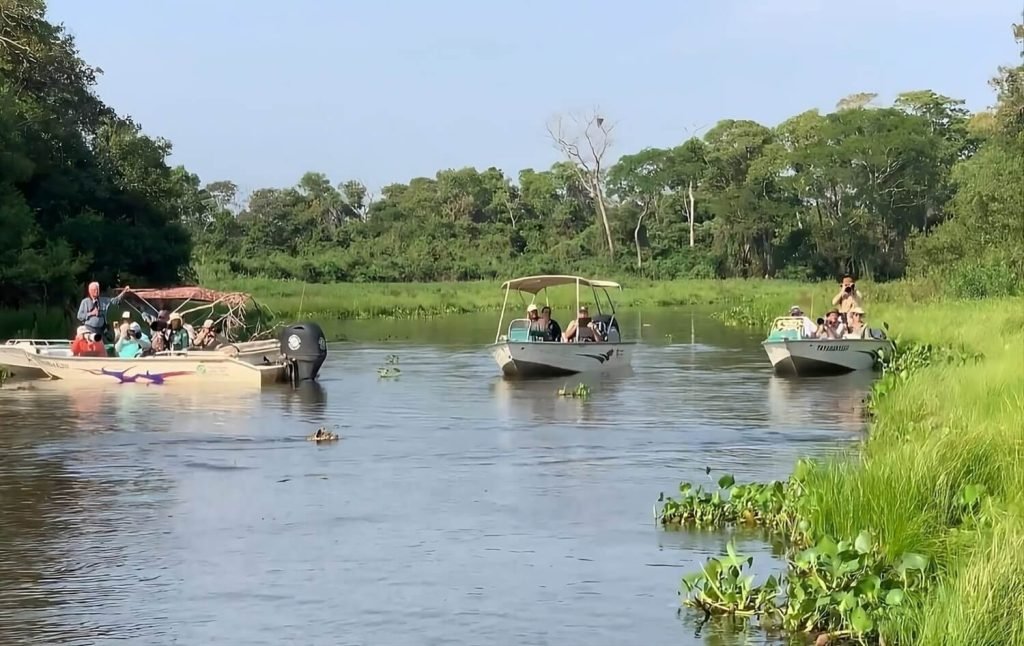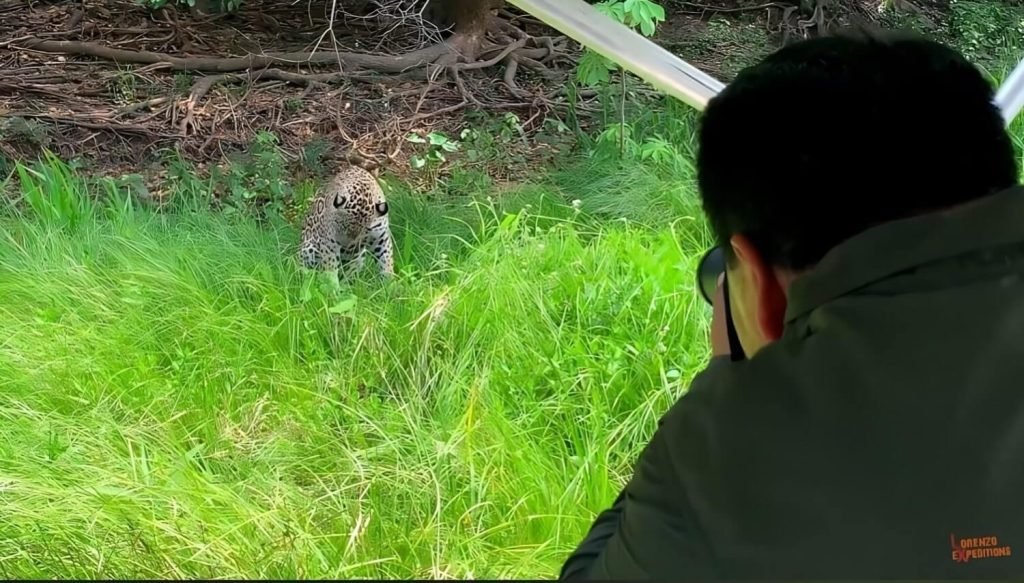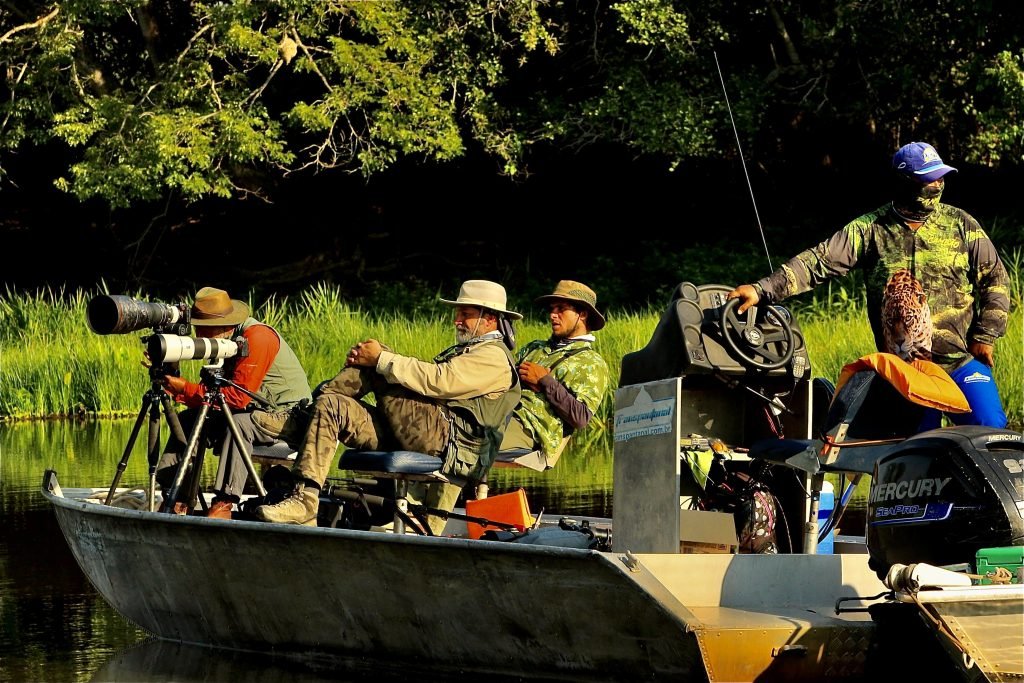Pantanal Biome

The Pantanal is one of the most exuberant and biodiverse biomes on the planet, known as the largest continuous wetland in the world. Located in the central-western region of Brazil, as well as parts of Paraguay and Bolivia, the Pantanal covers an area of approximately 150,000 km² and is recognized as a Natural World Heritage Site and Biosphere Reserve by UNESCO.
The Biodiverse Splendor of the Pantanal
- Characterized by its vast floodplains during the rainy season, which lasts from November to March, and its dry and swampy areas during the dry season, from April to October, the Pantanal has an impressive diversity of habitats, such as savannas, mountain ranges, grasslands, forests and several rivers and lagoons. This unique environment attracts a huge variety of wild animals and makes it one of the top destinations for nature lovers and animal watchers.
Fauna of the Pantanal
- The fauna of the Pantanal is truly impressive. The region is home to a large number of species, including some of the largest mammals in South America, such as the jaguar, the largest feline in the Americas, and the jaguarundi. Other important predators include the puma, maned wolf and caiman. In addition, the Pantanal is home to hundreds of bird species, such as the tuiuiú, the symbol bird of Brazil, as well as herons, macaws, toucans and many others.
- The waters of the Pantanal are also teeming with life. The numerous lagoons and rivers are home to abundant fish, such as the dourado, the pintado and the pacu, as well as countless species of amphibians and reptiles, such as the feared sucuri, one of the largest snakes in the world. The biological diversity of the Pantanal is so important that the region is often compared to a “Noah’s Ark” for the number of unique species it harbors.
The flora of the Pantanal
- The flora of the Pantanal is equally rich and adapted to its seasonal conditions. During the flooding period, aquatic vegetation thrives, creating a perfect breeding and feeding environment for many species of fish, birds and mammals. In the dry season, some areas of the Pantanal become drier and more favorable for the proliferation of grasses and shrubs, which provide food for herbivorous animals.
Despite all its beauty and natural richness, the Pantanal faces significant conservation challenges. Agriculture, cattle ranching, urban expansion and climate change have put pressure on this delicate ecosystem. Forest fires also pose a constant threat, especially during the dry season.
To protect this valuable natural heritage, conservation efforts have been undertaken in collaboration with governments, non-governmental organizations and the local community. The creation of protected areas and nature reserves has been a key strategy to ensure the survival and preservation of the Pantanal and its unique biodiversity.
In short, the Pantanal is a true jewel of nature and one of the most spectacular biomes in the world. Its biological richness, with breathtaking landscapes and abundant wildlife, make it an unparalleled destination for observing and studying nature. The preservation of this ecosystem is essential not only for the survival of its unique species, but also for the health of our planet as a whole.
Tourism in the Pantanal

The Pantanal is a region of extreme beauty and rich biodiversity. This makes it a unique and very attractive tourist destination for nature and wildlife lovers. Located in the central-western region of Brazil, the Pantanal is considered the largest wildlife sanctuary in the country. It also stands out as one of the largest floodplains in the world. Tourism in the Pantanal provides a memorable experience for visitors. It gives them the opportunity to connect with nature in an authentic and enriching way.
Fauna, Flora and Adventure: The Charm of Pantanal Tourism
- One of the main attractions of tourism in the Pantanal is, without a doubt, the observation of fauna and flora. The region is home to an incredible diversity of species, some of them rare and endangered. During a tour of the area, it is possible to see a great variety of animals. Photographic safaris in adapted vehicles, walks along the trails and boat trips on the rivers and lagoons are some of the activities that allow tourists to marvel at the jaguars, capybaras, caimans, tuiuiús, macaws and many other emblematic species of the Pantanal.
The Seasonal Beauty of the Pantanal
- In addition to wildlife, the Pantanal also offers breathtaking natural landscapes. The flooded landscapes and vast green plains create a unique atmosphere, which changes throughout the seasons. During the rainy season, the waters flood the plains of the Pantanal, giving it a totally different appearance from the dry season. In this scenario, colors and reflections combine to offer spectacular and changing views. This rich landscape invites travelers to explore and immerse themselves in this unique ecosystem.
Local Culture and Coexistence: Discovering the Authentic Pantanal
- Another facet of tourism in the Pantanal is the local culture and experience with traditional communities. The region is inhabited by people who maintain a deep relationship with nature and depend on it for survival. The ranches of the Pantanal offer the opportunity to immerse yourself in the routine of the local people, learn about their traditions and enjoy their typical cuisine. They also offer fascinating stories about living with the fauna and flora of the region. This cultural exchange is enriching and contributes to the appreciation of the region’s culture and sustainable practices.
Sustainable Tourism
- The practice of tourism in the Pantanal is also linked to the conservation of the biome. Companies committed to sustainability and nature conservation emphasize the importance of minimizing environmental impact. In addition, tour guides emphasize respect for the local fauna and flora. Making tourists aware of the importance of conservation is essential. This ensures that tourism in the region becomes a positive force for the protection of this fragile ecosystem.
However, it is important to mention that, as with any tourist destination, careful management is needed. This management is essential to prevent negative impacts on the environment and ensure long-term sustainability. Increased tourism can pose challenges, such as proper waste management and the protection of sensitive areas. In addition, it is crucial to control activities that may be potentially harmful to the environment.
In short, tourism in the Pantanal offers a unique and unforgettable experience, allowing visitors to connect with nature in its wildest and most untouched form. The region provides an authentic immersion in biodiversity and local culture. It also sensitizes tourists to the importance of preserving this magnificent biome for future generations. By visiting the Pantanal in a responsible and sustainable way, tourists contribute to its conservation. This ensures that this natural jewel will continue to enchant and inspire people for many, many years to come.
Photographic Pantanal

The Pantanal offers a multitude of opportunities to capture spectacular images of the fauna, flora and breathtaking landscapes of this unique ecosystem. As such, the Pantanal is a paradise for photography lovers. Considered one of the best photographic destinations in the world, the Pantanal attracts photographers from all over. They are eager to record the diversity and unique natural beauty of this region.
Photographic Adventures in the Pantanal: Among Jaguars and Herons
- Photographing in the Pantanal is a real treat, especially for those interested in wildlife. The Pantanal region is home to an incredible variety of animals. Among them, some of Brazil’s most emblematic mammals and birds stand out. Capturing the majesty of a jaguar in its natural habitat is an indescribable experience. The same goes for photographing the elegance of a heron fishing in the calm waters of a lagoon. The fauna of the Pantanal is abundant, so it is common to encounter large animals such as capybaras, caimans, toucans and macaws on your photographic excursions.
Photographic safaris are one of the best ways to explore the Pantanal and get unique photographs. Specialized guides take photographers to strategic areas. These areas are where wildlife is most active and conducive to observation and recording. Boats offer an excellent option for photographing aquatic animals in rivers and lagoons. They also allow you to enjoy the lush landscapes along the banks.
In addition to the fauna, the flora of the Pantanal also offers countless photographic opportunities. During the rainy season, the landscape is flooded, creating mirrors of water that reflect the sky and clouds. These provide breathtaking and captivating images. The vibrant colors of the flowers, the textures of the trees and the variety of aquatic plants offer photographic elements. These allow for the creation of artistic and inspiring compositions.
Exploring Local Culture Through Photography in the Pantanal
- Another interesting aspect of photography in the Pantanal is the ability to capture local culture. It also offers the opportunity to document the lives of the communities that inhabit this unique region. Visiting traditional farms and lodges gives photographers the opportunity to record the routine of the Pantanal’s inhabitants. In addition, they can capture their traditions, craftsmanship and unique interaction with nature. These photographs have the power to convey the essence of the way of life of these communities. They also reflect their harmonious relationship with the natural environment.
However, it is important to remember that photography in the Pantanal requires a responsible and ethical approach. Photographers have a responsibility to respect wildlife and the environment. This implies avoiding any behavior that may disturb the animals or their habitat. The use of wildlife photography techniques that minimize intrusion is crucial to the safety of the animals. Likewise, the use of appropriate equipment plays a key role in preserving the environment.
In short, the Pantanal stands out as a photographic destination second to none. It offers a unique and enriching experience for photography and nature lovers. Capturing in images the diversity of the fauna, the beauty of the flora and the local culture is a powerful way to preserve and share the richness of this exceptional biome. Photographing in the Pantanal offers the opportunity to witness the magnificence of wildlife. It also highlights the importance of conserving this precious ecosystem for present and future generations.





